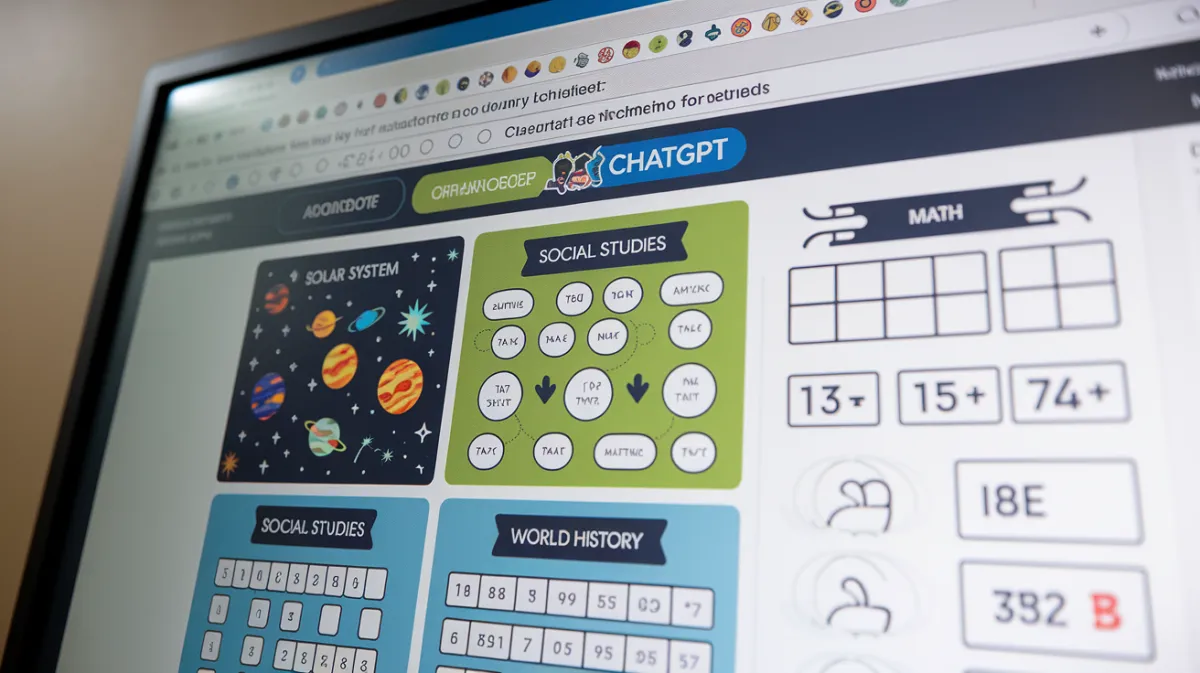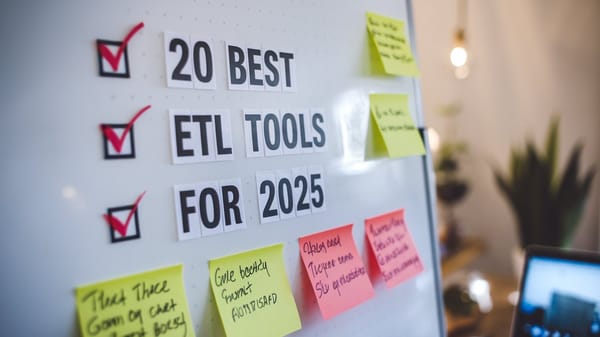Does ChatGPT make worksheets?

Exploring ChatGPT's Role in Creating and Managing Worksheets
In the rapidly evolving landscape of artificial intelligence, ChatGPT, developed by OpenAI, has emerged as a versatile tool with applications spanning various domains, including education and data management. A pertinent question that arises is: can ChatGPT create worksheets? This report delves into the capabilities and limitations of ChatGPT in the context of worksheet creation, particularly focusing on its integration with spreadsheet software like Microsoft Excel and Google Sheets.
ChatGPT, particularly in its latest iteration, ChatGPT-4, has demonstrated significant potential in assisting users with spreadsheet-related tasks. While it cannot directly create Excel spreadsheets due to the lack of a direct interface with Excel's graphical user interface (GUI), it can generate CSV files that are compatible with Excel. This functionality is facilitated through plugins available in ChatGPT Plus and Enterprise versions, allowing users to export data in a format that can be easily imported into Excel.
You can also visit Oncely.com to find more Top Trending AI Tools. Oncely partners with software developers and companies to present exclusive deals on their products. These deals often provide substantial discounts compared to regular pricing models, making it an attractive platform for individuals and businesses looking to access quality tools and services at more affordable rates.
Some common types of products and services featured on Oncely include a wide range of software tools across various categories, including productivity, marketing, design, development, project management, and more. Examples include project management platforms, SEO tools, social media schedulers, email marketing software, website builders, and graphic design tools.
One unique aspect of Oncely is its “Lifetime Access” feature, where customers can purchase a product once and gain ongoing access to it without any recurring fees. However, it’s important to note that the availability of lifetime access may vary depending on the specific deal and terms offered by the software provider.
Oncely also provides a 60-day money-back guarantee on most purchases, allowing customers to try out the products and services risk-free.
Oncely are hunting for the most fantastic AI & Software lifetime deals like the ones below or their alternatives:

Moreover, ChatGPT excels in providing guidance and generating code for spreadsheet tasks. It can suggest complex formulas, offer layout design advice, and explain Excel concepts, making it a valuable resource for both novice and experienced users. For instance, it can assist in formula and function generation, helping users automate calculations and enhance spreadsheet functionality.
In educational settings, ChatGPT is leveraged to create interactive and engaging learning materials. Teachers can use it to generate writing prompts, quizzes, and even entire lesson plans, thereby streamlining the process of content creation. However, the use of AI-generated content in classrooms also raises concerns about academic integrity and the potential for misuse.
Despite its capabilities, ChatGPT faces challenges in handling complex Excel tasks that require real-time interaction with the software. Tasks such as creating dynamic charts, pivot tables, and interactive dashboards remain beyond its current capabilities due to its text-based nature and lack of direct software manipulation. This limitation underscores the importance of understanding ChatGPT's role as a supportive tool rather than a standalone solution for comprehensive spreadsheet management.
Capabilities of ChatGPT in Worksheet Creation
Automating Worksheet Content Generation
ChatGPT has emerged as a powerful tool for automating the creation of educational worksheets, significantly reducing the time and effort required by educators. By leveraging its natural language processing capabilities, ChatGPT can generate customized worksheet content tailored to specific educational needs. For instance, educators can use prompts to instruct ChatGPT to create worksheets for various grade levels and subjects. A typical prompt might be: "Create a worksheet for my [GRADE LEVEL AND SUBJECT] students learning [TOPIC]." This allows teachers to specify the number of items or pages required, ensuring that the generated content aligns with their educational objectives (AI for Education).
Customization and Personalization
One of the standout features of ChatGPT in worksheet creation is its ability to personalize content. Educators can customize worksheets to cater to different learning styles and paces. For example, ChatGPT can generate differentiated tasks that accommodate students with varying levels of understanding. This personalization is crucial in inclusive education settings, where students may have diverse needs. By providing tailored content, ChatGPT helps educators create a more engaging and effective learning environment (Toddle App).
Interactive and Engaging Content
ChatGPT can enhance the interactivity of worksheets by incorporating elements that engage students actively. For instance, it can generate questions that require critical thinking or problem-solving, rather than simple recall of facts. This approach not only makes learning more engaging but also helps develop higher-order thinking skills. Additionally, ChatGPT can create gamified elements within worksheets, such as quizzes or puzzles, which can motivate students and make learning more enjoyable (ClassPoint).
Efficiency in Content Creation
The efficiency of ChatGPT in generating worksheet content is a significant advantage for educators. Traditionally, creating worksheets is a time-consuming process that involves researching, drafting, and formatting. ChatGPT streamlines this process by quickly generating content based on specific prompts. This efficiency allows educators to focus more on teaching and less on administrative tasks. Moreover, the ability to generate multiple versions of a worksheet with varying difficulty levels can save educators considerable time and effort (BookWidgets).
Limitations and Considerations
While ChatGPT offers numerous benefits in worksheet creation, it is essential to acknowledge its limitations. The AI model relies on the quality and specificity of the prompts provided by the user. Therefore, educators must craft clear and detailed prompts to ensure the generated content meets their expectations. Additionally, while ChatGPT can generate accurate and relevant content, it is not infallible. Educators should review and edit the generated worksheets to ensure accuracy and appropriateness for their students. This review process is crucial to maintain educational standards and to address any potential biases or inaccuracies in the AI-generated content (Toddle App).
Integration with Educational Tools
ChatGPT's capabilities can be further enhanced when integrated with other educational tools and platforms. For example, combining ChatGPT with tools like ClassPoint can transform static worksheets into interactive digital experiences. Educators can use ChatGPT to generate content and then utilize ClassPoint to add interactive elements such as quiz buttons or multimedia resources. This integration not only enriches the learning experience but also aligns with modern educational practices that emphasize technology-enhanced learning (ClassPoint).
Conclusion
Limitations of ChatGPT in Worksheet Creation
Lack of Contextual Understanding
One of the primary limitations of ChatGPT in creating worksheets is its lack of deep contextual understanding. While ChatGPT can generate content based on prompts, it often struggles to grasp the nuanced requirements of educational materials. This limitation can lead to the creation of worksheets that may not fully align with the specific learning objectives or the educational standards required by educators. For instance, when tasked with generating a worksheet on a complex topic, ChatGPT might produce content that is either too simplistic or overly complex, failing to match the intended educational level (source).
Limited Personalization and Adaptability
Although ChatGPT can offer some level of customization, its ability to personalize content is limited. The AI relies heavily on the input it receives, which means that without detailed and specific prompts, the generated worksheets may lack the necessary personalization to cater to diverse student needs. This limitation is particularly evident in educational settings where differentiation is crucial to address varying student abilities and learning styles. The AI's inability to adapt content dynamically based on real-time feedback or student performance further restricts its effectiveness in creating truly personalized educational materials (source).
Quality and Accuracy Concerns
The quality and accuracy of the content generated by ChatGPT can be inconsistent. While the AI is capable of producing grammatically correct and coherent text, it may occasionally generate information that is factually incorrect or misleading. This is a significant concern in educational contexts where accuracy is paramount. Educators must meticulously review and verify the content produced by ChatGPT to ensure it meets the required educational standards and does not propagate misinformation. This additional layer of verification can negate the time-saving benefits that AI is supposed to provide (source).
Ethical and Integrity Issues
The use of ChatGPT in educational settings raises ethical concerns, particularly regarding academic integrity. The AI's ability to generate complete essays or answers to complex questions can lead to misuse by students, potentially undermining the integrity of assessments. This issue is compounded by the AI's lack of ability to provide feedback or explanations, which are crucial for the learning process. Without the capacity to engage in meaningful dialogue or provide justifications for its outputs, ChatGPT's role in education remains limited to content generation rather than facilitation of understanding (source).
Dependence on High-Quality Prompts
The effectiveness of ChatGPT in creating worksheets is heavily dependent on the quality of the prompts it receives. Crafting effective prompts requires a certain level of expertise and understanding of both the subject matter and the AI's capabilities. Educators who are not familiar with prompt engineering may find it challenging to extract the desired output from ChatGPT, leading to suboptimal worksheet content. This dependency on high-quality prompts can be a barrier for educators who are not well-versed in AI technologies, limiting the accessibility and usability of ChatGPT in educational environments (source).
Technical Limitations and Accessibility
Technical limitations also pose challenges in the use of ChatGPT for worksheet creation. The AI requires a stable internet connection and sufficient computational resources, which may not be available in all educational settings. Additionally, the AI's accessibility can be hindered by device compatibility issues, particularly in under-resourced schools or regions with limited technological infrastructure. These technical barriers can prevent widespread adoption of ChatGPT as a tool for educational content creation, thereby limiting its potential impact (source).
Conclusion
Applications of ChatGPT in Educational Settings
Enhancing Resource Creation
ChatGPT has been integrated into educational settings to streamline the creation of educational resources, such as worksheets, lesson plans, and student workbooks. The BlendED Worksheet plugin exemplifies this application by allowing educators to generate various educational materials directly from their teaching content. This tool simplifies the process of creating question papers, bubble sheets, and worksheets, significantly reducing the time educators spend on administrative tasks. By automating these processes, ChatGPT enables teachers to focus more on delivering quality education.
In addition to worksheets, ChatGPT can assist in developing comprehensive student workbooks. A guide from AI for Work outlines how educators can use specific prompts to create detailed and tailored student workbooks. This capability is particularly beneficial for curriculum developers who need to produce high-quality educational materials efficiently.
Facilitating Lesson Planning
ChatGPT's ability to generate lesson plans is another significant application in educational settings. Educators can use ChatGPT to create lesson plans by simply inputting the desired topic and level of detail. For instance, a Medium article describes how teachers can quickly develop lesson plans for complex topics, such as French reflexive verbs, by providing specific instructions to ChatGPT. This tool not only saves time but also allows for the customization of lesson plans to better meet the needs of diverse student groups.
Moreover, ChatGPT can assist in generating lesson plans that incorporate interactive and engaging activities. By using prompts, educators can create lesson plans that include simulations, role-plays, and other interactive elements, enhancing student engagement and learning outcomes.
Supporting Personalized Learning
One of the transformative applications of ChatGPT in education is its ability to support personalized learning. According to research by Adiguzel et al., ChatGPT can optimize educational trajectories by tailoring learning experiences to individual student needs. This personalization is achieved by analyzing student interactions and adjusting content accordingly, which can lead to increased engagement and retention.
ChatGPT's role as a dynamic educational assistant is further highlighted in its ability to provide instant feedback and support for self-directed learning. For example, in programming education, students can use ChatGPT to receive immediate feedback on coding exercises, enhancing their learning experience and understanding of complex concepts.
Enhancing Interactive Learning
ChatGPT's capabilities extend to enhancing interactive learning experiences. It can generate discussion prompts, questions, and debate topics that engage students in meaningful conversations. As noted in a Pressbooks publication, faculty members can use ChatGPT to create thought-provoking discussion points that stimulate critical thinking and peer interactions.
Additionally, ChatGPT can facilitate online discussions by acting as a co-facilitator in virtual classrooms. It can generate engaging questions and prompts that keep students actively involved in the learning process. This application is particularly useful in distance education, where maintaining student engagement can be challenging.
Overcoming Educational Barriers
ChatGPT's integration into educational settings also addresses geographical and accessibility barriers. As highlighted by Klnc, ChatGPT can provide consistent educational experiences across different locations, making it a valuable tool in distance education. By offering on-demand tutoring and support, ChatGPT helps students overcome challenges associated with remote learning environments.
Furthermore, ChatGPT's ability to generate diverse content formats, such as text-based lessons and interactive quizzes, enhances accessibility for students with different learning preferences. This adaptability ensures that all students have access to high-quality educational resources, regardless of their location or learning style.
Addressing Challenges and Opportunities
While ChatGPT offers numerous benefits in educational settings, there are challenges and opportunities associated with its implementation. A systematic review of ChatGPT in education literature identifies the need for more empirical studies on its long-term effects on student learning outcomes. Understanding how ChatGPT interacts with different educational levels and contexts is crucial for optimizing its use.
Despite these challenges, the potential opportunities for ChatGPT in education are vast. By redefining personalized learning and enhancing interactive experiences, ChatGPT holds the promise of transforming traditional educational practices. Its ability to act as a cognitive agent in various disciplines, such as chemistry and language education, further underscores its potential to enrich learning experiences and foster critical thinking skills.





